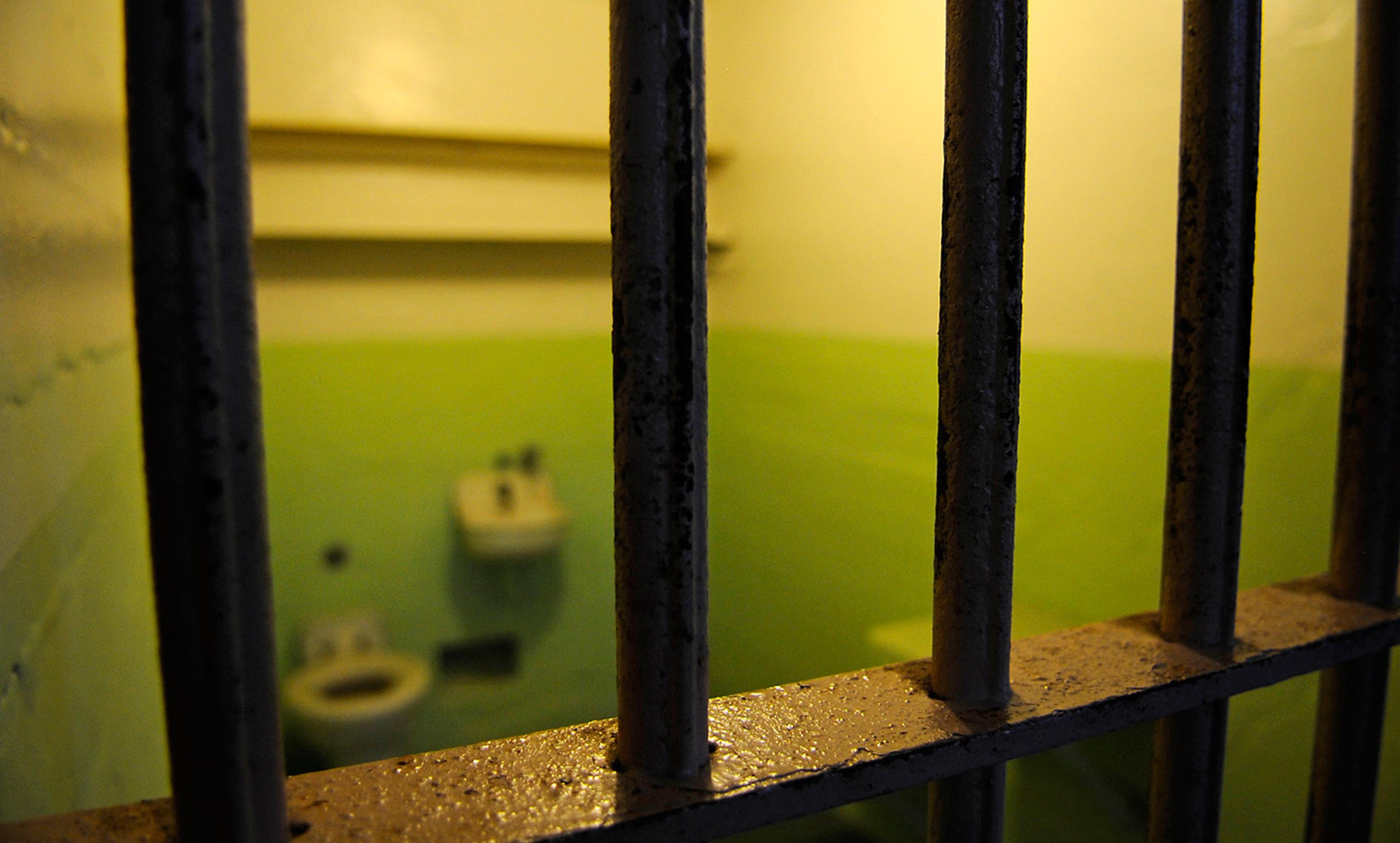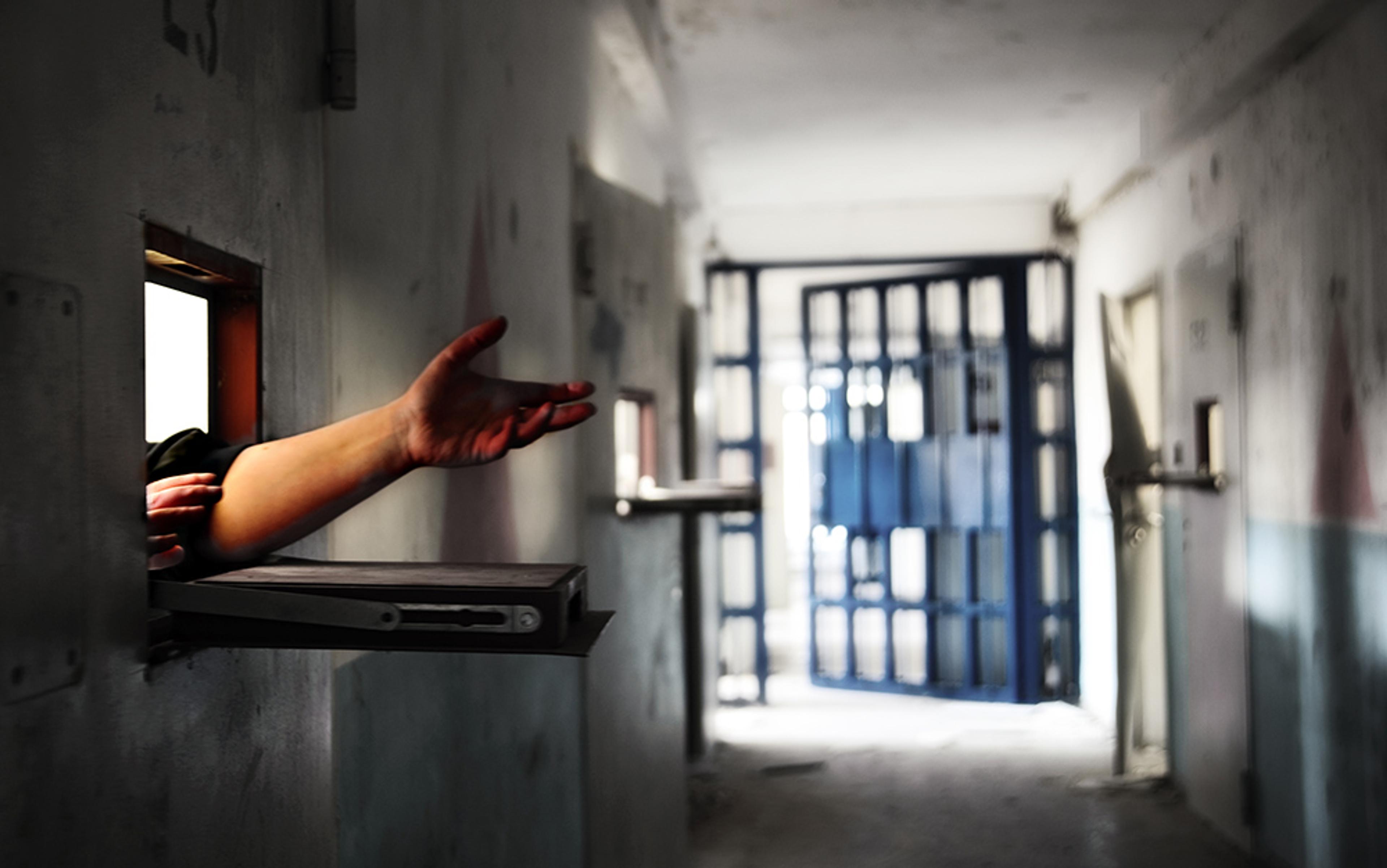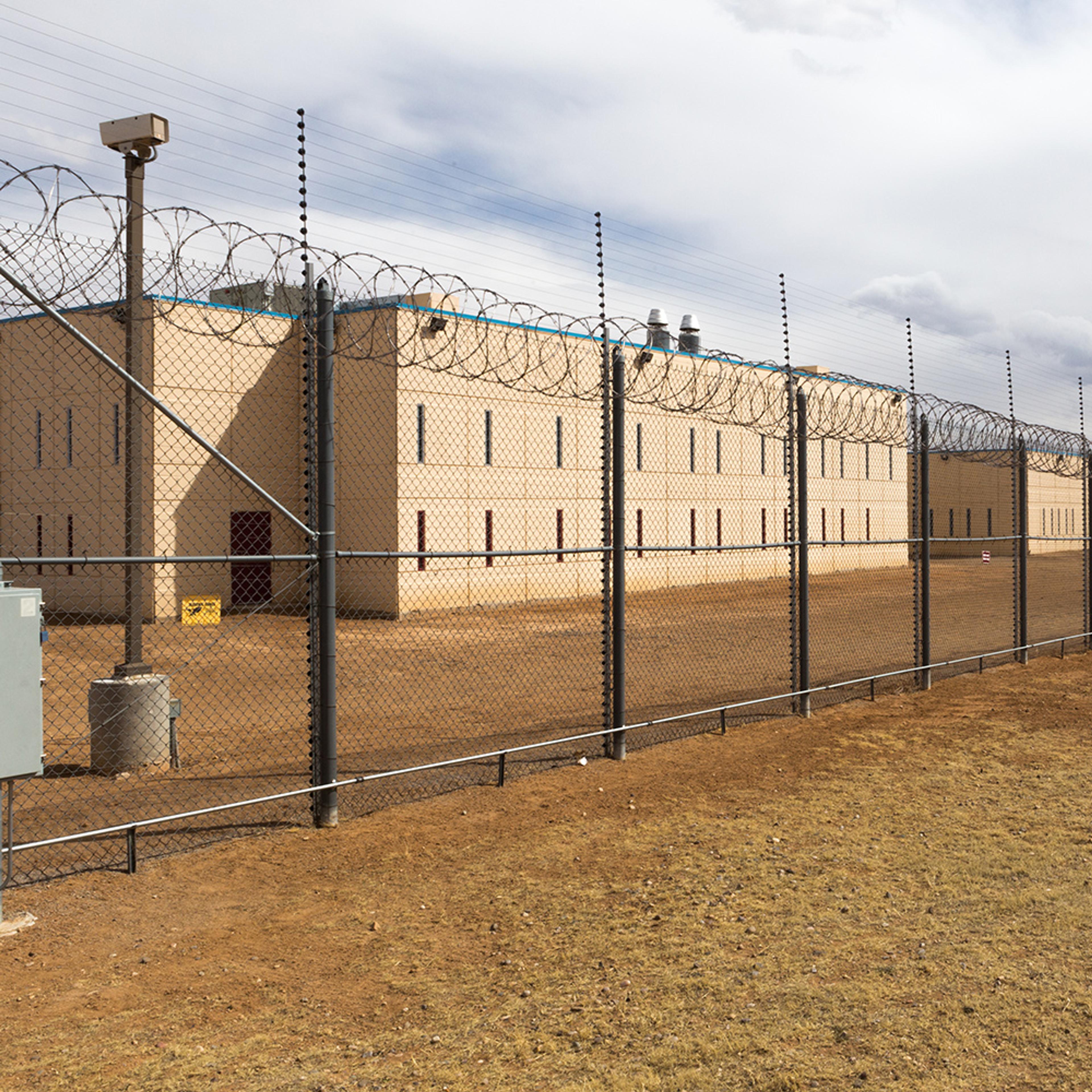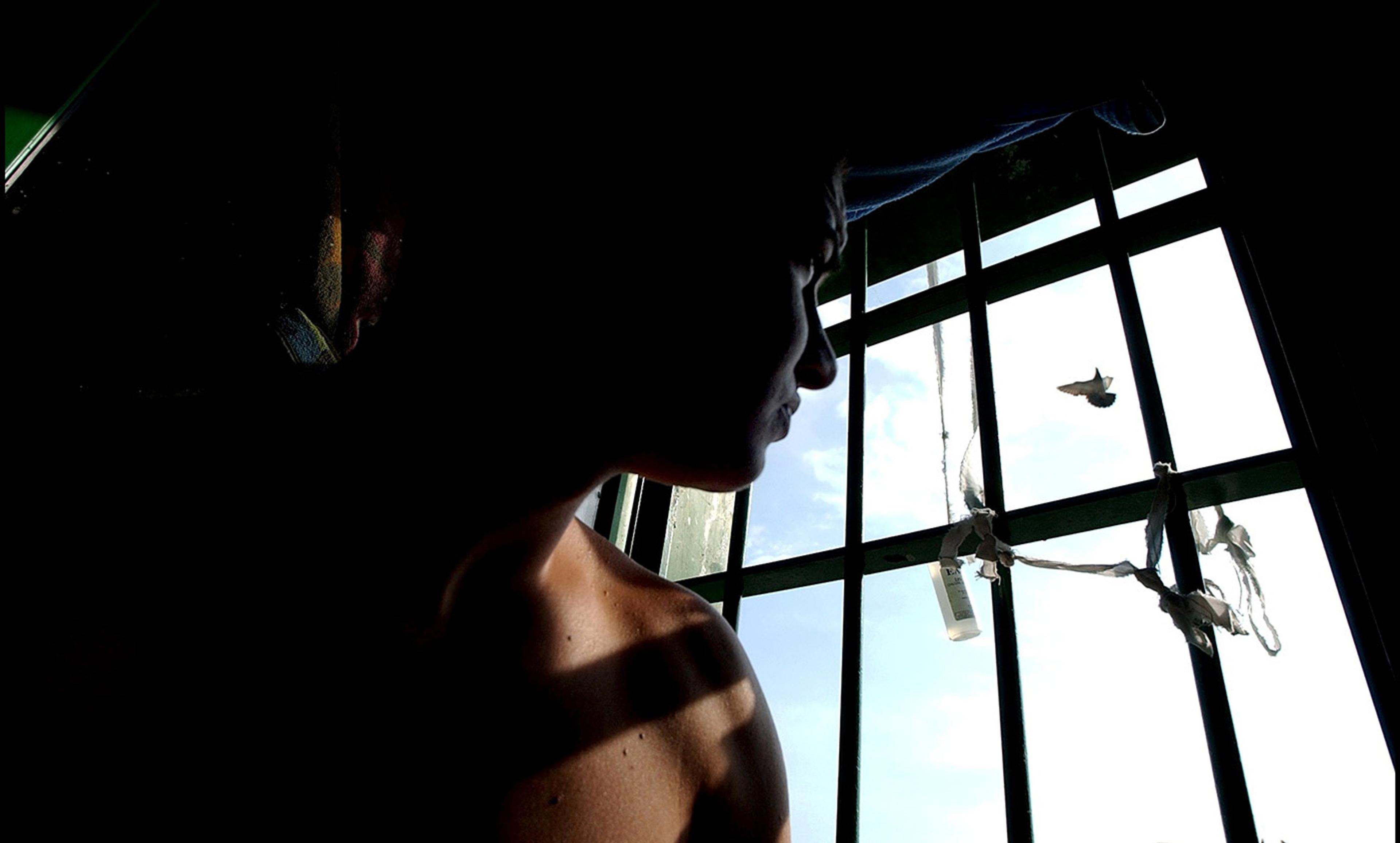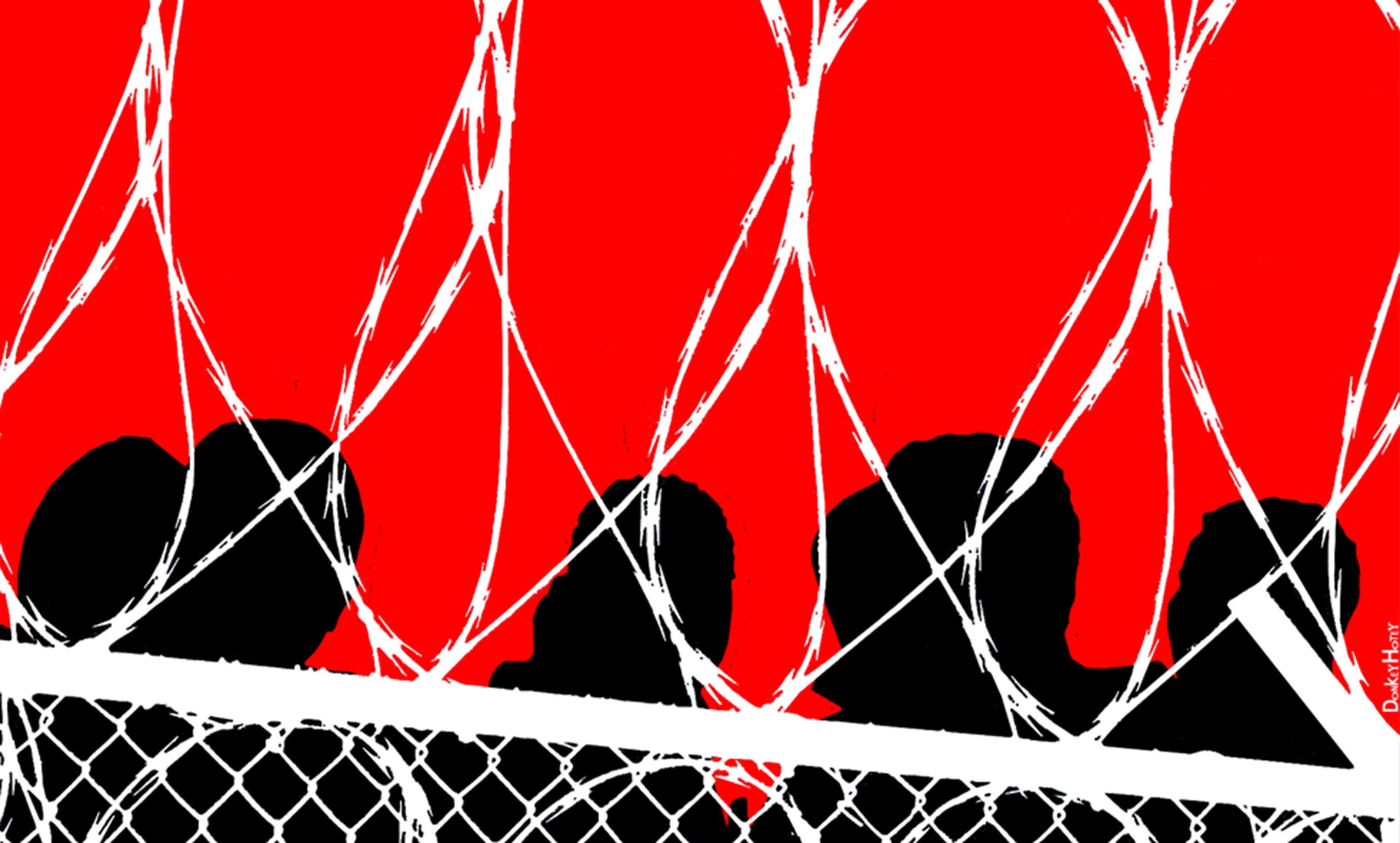The warden and two officers in Sing-Sing Prison, New York State, c 1915. Courtesy Wikipedia
Approximately 2.3 million people in the United States are currently in prison or jail. (Prisons are run by federal or state authorities; jails are run locally.) China, a non-democratic regime with a population four times larger than the US, incarcerates fewer persons in per-capita and absolute terms. What’s more, most people in US jails today have not been convicted, meaning that they are being punished without trial. Since US jail admissions number approximately 11 million per year, pre-trial incarceration is, arguably, the real problem of ‘mass incarceration’.
The crucial concept governing carceral practices is something called ‘less eligibility’. The idea dates back to the English Poor Law Amendment Act of 1834, which codified English practices of dealing with the indigent. In 1832, the economist Nassau William Senior described how the ‘first and most essential of all conditions’ in administering relief to the poor (often by moving them into a workhouse) is that the indigent’s ‘situation on the whole shall not be made really or apparently so eligible as the situation of the independent labourer of the lowest class’. That is, the conditions in the workhouse should be awful: worse even than the poorest of the poor.
But even before Senior’s famous line, a different carceral ideal was afoot: equality. In 1791, writing specifically about criminal offenders, the English utilitarian philosopher Jeremy Bentham argued that ‘the ordinary condition of a convict doomed to a punishment that few or none but the individuals of the poorest class are apt to incur, ought not to be made more eligible than that of the poorest class of subjects in a state of innocence and liberty’. As the historian Janet Semple observed in Bentham’s Prison (1993), his rule of severity is not ‘less eligibility’ but a more commonsense equality principle – offenders should have access to no more resources than they had while free. ‘Bentham,’ Semple wrote, ‘did not envisage grinding his convicts down to below the level of the poorest of the poor.’
Other countries do not run their jails and prisons according to a principle of less eligibility. German prisons operate under an ‘approximation’ principle, wherein offenders’ rights to privacy, dignity and property are protected. Norwegian prisons use a similar ‘normality principle’, which holds that daily prison life should be, as far as possible, no different from ordinary life. Fellow Englishman and Bentham disciple James Mill embraced the normality principle in 1825 by arguing that inmates in pre-trial incarceration should be allowed to lead the same life that they enjoyed prior to arrest, including access to employment and freedom to make small purchases with their own money. Today, US jails and prisons have rejected these examples in thrall to ‘less eligibility’, and not just for the poorest of the poor.
Why are the carceral practices in the US so harsh? Part of the reason is the vestige of a Christian-inspired desire to reform the offender’s soul. Around the time of the Revolution, the penitentiary’s ‘unsocial manner of life’ based on order, obedience and silence could seem plausible only to those who thought that they could achieve a ‘new victory of mind over matter’. Today, prolonged solitary confinement is coming to be seen for what it is: torture. Another reason, identified in James Whitman’s book Harsh Justice (2005), is populism. Elected prosecutors and judges are guided by popular, punitive attitudes in a way that unelected bureaucrats in countries such as Germany (or Canada) are not. Survey research shows that Canadian and US attitudes about punishment are similar, but Canada has much more lenient sentencing policies than the US because bureaucratic appointees, not elected officials, make decisions about punishment. Another layer is race. Warehousing black males is clearly an outcome, and perhaps also an important aim, of US criminal justice. The result of this grab-bag of influences is segregation without soul-craft, and discipline and surveillance without reform.
If, as I think, the aim of punishment is rehabilitation, it is hard to justify less rather than equal eligibility. But not all agree that rehabilitation is the primary aim of punishment. Deterrence theorists think that controlling crime is the most important aim of punishment. Retributivists hold that punishment should repay the harm done to another in a like manner: an eye for an eye, a tooth for a tooth.
As evidence that precisely the opposite happens in US prisons, The End of Punishment (2013) by the present-day retributivist Robert Blecker’s recounts an interview with a Tennessee Death Row correctional officer who feels like a waiter, and a guard who complains that Florida’s Death Row is ‘the best deal in the building’. Blecker is right that we should classify offences and offenders according to the severity of their crime. Perhaps the ADX Florence supermax prison should even be, as its ex-warden described it to CNN, ‘far much worse than death’ for the worst of the worst. But think about this: county jail is ‘hard time’, and harder than state prison, as I am told by a local jail administrator. Almost 500,000 held in US jails are being held pre-trial. The average jail time served is short. Offenders quickly return to their communities, but they are not prepared for re-entry. Even the average jail and prison time might actually help offenders to become worse.
Too often, the US conversation about criminal justice is about principles and theories of punishment: rehabilitation, retribution, deterrence. What I am arguing here is that these theories amount to little if we ignore less eligibility, or how we punish. Visiting a jail without an outdoor yard, where offenders have no physical contact with friends and family during their incarceration, or a prison where life unfolds within coils of obtrusive razor wire, is not a normal life, and doesn’t prepare you to return to normal life. As opinion in the US starts to move away from some punitive strategies such as solitary confinement, we should reconsider which of our other carceral practices meet or violate the crucial secondary principles (leniency, proportionality, egalitarianism) of a just criminal justice system.
In Germany, there are restrictions on types of uniforms, on partitioning visitors from offenders, and on the use of bars and peepholes in cells. There are also protections of offenders’ rights to privacy, information, public exposure, and leisure and culture, that do not exist in the US. In the US, courts have upheld the constitutionality of expressive punishments that demean offenders, pre-trial incarceration that looks punitive, and denials of privacy and dignity.
It is a tragedy if the attempt to have a just society with a suitable criminal justice system has been transformed into criminogenic warehousing, based on surveillance and discipline, which achieves few or none of the goals of punishment. It is foolishness to countenance such a system merely because it has not yet touched you. The road to the present state of affairs leads through less eligibility, which, on the surface, is a principle that makes sense: treat offenders to a life that is worse than life on the outside. After all, why should offenders have air conditioning if the farmer ‘living in innocence and liberty’ does not? But the answer is that it is too easy to forget the other constraints on the dignity, privacy and autonomy of those incarcerated in jails and prisons.
Our present system is costly and ineffective; it creates aberrant economies and empowers prison gangs that in turn influence street gangs. Prisons reproduce the cultural inadequacy of life on the inside on our streets and in popular culture, and when offenders are released into communities, their lack of rehabilitation justifies further segregation and other collateral consequences, such as employment and housing discrimination.


